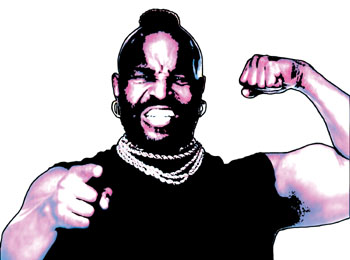[This follows the previous post]
How does Edward Taylor return to the world of men, the world of the masculine, after playing the woman? Taylor never trades places with God, making God feminine, as Clendenning suggests. No, the ultra-masculine God reissues Taylor his masculine identity because of his willingness to undergo feminization/humiliation. Taylor receives his manhood back, restored and amplified.
We find this in a drama related to gynesis – but this time a distinctly masculine drama. Consider the fascinating (and overlooked) metaphors of circumcision and emasculation in the Preparatory Meditations. The first, the ritual of circumcision, Taylor invokes in all its biblical richness (see meditations II.10 and II.70). A man must be separated from his sinful, gentilic identity, symbolized by the foreskin. But this means having a real part of one’s manhood cut off, just as Jesus Christ Himself was cut off from God at the cross:
The Infant male must lose its Foreskin first,
Before Gods Spirit Workes as Pulse, therein
To Sanctify it from the sin in’t nurst,
And make’t in Graces Covenant to spring.
To shew that Christ must be cut off most Pure.
His Covenantall blood must be mans Cure. (25-30)
Male blood – whether in the type represented by infant circumcision, or the reality in Jesus Christ’s crucifixion – needs to be shed in order for God’s glory to be granted to him. The effect of this bloodshed is not just forensic justification but total male restoration. This happens ultimately because of Christ, and at Christ’s hands: with His circumcising power He initiates men. He has authority to reshape (not unman) Taylor.
The more radical measure, of course, would be that of emasculation, the very procedure the Puritan minister cannot bear, and pleads against. Relevant here is the work of maverick theorist Gary Taylor, who has claimed to find in western literature the ubiquitous theme of castration. “This is a specter that has haunted men for centuries,” he says, “the fear that manhood will become, or has already become, obsolete, superfluous, ridiculous, at best quaint, at worst disgusting.” One need not invoke Freud to understand Puritan fears associated with such de-sexing. More than surrendering a certain physical vitality, emasculation would imply a forfeiture of one’s claim to authority in home and church. How is Taylor to head his family, his church, his town, if he comes away from worship without his genitals?
His anxiety materializes most acutely in the image of the purse. Rather than the accessory we today associate with women, the most literal meaning for a Puritan audience would have been the money bag. Thus when Taylor implores, “Yet may I Purse, and thou my Mony bee” (I.2.29), or asks, “Am I thy Gold? Or Purse, Lord, for thy Wealth”? (“Another Meditation at the Same Time,” 1), he presents himself as the empty wallet, and God the financier who provides the gold coinage of grace. The purse, I maintain, has nothing to do with the female personae. It is a male object – truly, the male object to the colonial mind. The English word “purse” derives from the French bourse, also translatable as “testicles.” Accordingly, the Puritan man was generally in charge of the home finances, thereby associating the money bag with his manhood. Jokesters of the era regularly made puns about “coins,” “stones” and “purses” in the seventeenth century, and, most suggestively, Daniel Patterson’s glossary of Taylor’s poetry straightforwardly defines “purse” as “the scrotum of an animal.” So the Westfield minister fears for his manhood, and with good reason! He has met the living, all-masculine God before whom no competitor can stand.
There is no doubt as to Taylor’s need to confess his discredited manhood. In meditation II.18 the beleaguered minister confesses that he is a “Pouch of Sin, a purse / Of naughtiness,” and, by the end of the poem, having exhausted all manner of cultic and sacrificial devices, he comes up with the true offering: Shall I my Sin Pouch lay, on thy Gold Bench My Offering, Lord, to thee? I’ve such alone But have no better . . . . And shall mine Offering by thine Altars fire Refin’d, and sanctifi’d to God aspire? (43-45, 47-48) His wealth, his purse, his very man-self, has been splayed upon the sacrificial table. He voluntarily submits, even humiliates, himself. But he pleads for God to refrain from permanently rejecting (or excising) his manhood. In place of his dilapidated offering he prays, Lord let thy Deity mine Altar bee And make thy Manhood on’t my sacrifice. (55-56) At the last minute, by design, the incarnation is invoked. Jesus Christ’s deity is Taylor’s altar, and, more importantly, Jesus Christ’s “Manhood” is the substitute in lieu of Taylor’s own. Christ’s manhood is acceptable, for, exchanged for the Christic substitute, it harmonizes perfectly with the divine. Taylor is spared. He has kept his purse – but now with Christ as his “Mony” ringing within it. The holy coins, replete with honor and authority, fill the poet’s container.
Again in meditation II.9. This time Taylor compares himself to Moses, who must endure the fiery glory of the Lord.
I long to see thy sun upon mee shine,
But feare I’st finde my selfe thereby shown worse
Yet let his burning beams melt, and refine
Me from my dross, yet not to singe my purse. (55-58)
The radiance of God fascinates and threatens Taylor. He recognizes that the “burning beams” are for the purification of his wealth, his coins, but still he fears that God will “singe my purse.” The literal meaning simply plays out the metaphor, wanting his money refined in such a way in that everything else is not ablaze in the process. Still, in Taylor’s paradigm, this can only mean the fear of permanent damage and dissolution through psychospiritual emasculation. Exchanging one’s coins for purification’s sake is one thing; having one’s sack burnt off quite another. Submitting to circumcision one thing; facing irreparable de-sexing something quite different. Fortunately, God has not neutered him, or, if he has, has done so temporarily in order to fill his purse with gold. Taylor remains the bag, the container. Christ has become the gold coins, Taylor’s new manhood, Taylor’s new wealth. He can now return to his home, his church and town with a new, robust, manly authority direct from God Himself. If gynesis emphasizes Taylor’s renewed authenticity, the divine masculization shows that authenticity to be (for him at least) the ground of earthly male authority.



